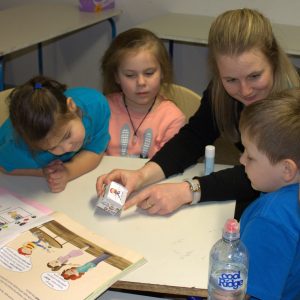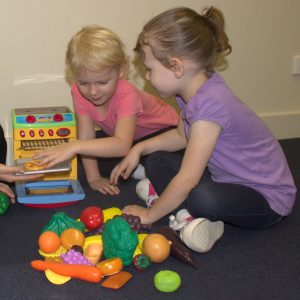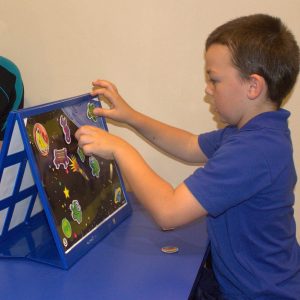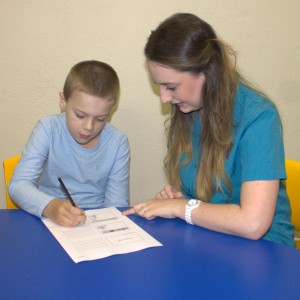 Theory of mind is the ability to understand that other people have different knowledge, thoughts and feelings to our own. Theory of mind is important for communicating effectively, developing social skills and empathy. Children develop theory of mind over time and this can be particularly difficult for children on the autism spectrum in particular.
Theory of mind is the ability to understand that other people have different knowledge, thoughts and feelings to our own. Theory of mind is important for communicating effectively, developing social skills and empathy. Children develop theory of mind over time and this can be particularly difficult for children on the autism spectrum in particular.
Research done in the 1980's tested children’s theory of mind by showing children some pencils and then placing the pencils in an empty Smartie packet. Another person would then enter the room and the child would be asked what the visitor thought was in the box. Children who had developed theory of mind would know that the new person would think the box had Smarties inside, because they had not seen the pencils. Children who had not yet developed theory of mind would say the person thought there were pencils in the box because that was what they, themselves knew. Typically developing children could see the other person's perspective by 4 years of age, while children on the autism spectrum were around 6 years of age before they understood this task.
More recent studies used more complex tasks to assess older children and adults and found that all people on the autism spectrum found these tasks difficult, even those with very high intelligence.
 Understanding theory of mind requires a number of skills:
Understanding theory of mind requires a number of skills:
- understanding facial expressions and emotions
- relating what is seen or said to the context in which it happens
- relating previous experience to what is happening
- taking into account what you know about the other person and their knowledge and life experience
Even with all this information there is an element of "filling in the gaps", by inferring information that is not known as a fact. Typically developing children learn to do this with little effort but those on the autism spectrum find it very difficult.
Some behaviours you may see in children who have not yet developed theory of mind may include:
- A child who cries but does not try to tell you what they want because they think you already know
- A child who does not tell the teacher that the other child hit them first because they do not realise that the teacher did not see it happen and therefore does not know
- A child who has difficulty telling about what they did at school because they think the parent has the same knowledge of what happened that they do, so they don't need to tell you
- A child (or adult) who talks endlessly about dinosaurs because they find them interesting and do not realise that others are not so interested
- A child who laughs when another child falls over because it looks funny and they do not understand that the other child is hurt
- A child who is blunt and direct to others, not realising that what they say may hurt another's feelings
- A child who is set up by others who they think are their friends because they cannot read the other children's intentions
- A child who interprets an accidental bump as a physical attack
 To help your child develop theory of mind you can try:
To help your child develop theory of mind you can try:
Teaching your child to understand emotions and facial expressions. See last weeks blog for ideas about this.
Using barrier games to help your child develop an understanding that other people's knowledge is different to theirs and that they need to take this into account when giving information to others. You can download information and printable barrier games from our website.
Talking aloud to your child about your thoughts and feelings and compare it with theirs. "I am feeling hungry because I did not have a snack. You had a snack, are you hungry?"
Using lots of "cognitive verbs" when talking to your child, watching movies or reading stories together. These are words that describe what is happening in your head, like think, feel, wonder, decide.
Talking to your child about how different people have different thoughts, feelings and interests. "You like trains so you are having fun, but your sister does not like trains so much so she is a bit bored with this long trip".
Drawing faces with thought bubbles with older children to show that people have different thoughts about the same thing. You can also draw a heart to show that people have different feelings about the same thing. Talk about what factors might cause people to have these different thoughts and feelings.
 You can draw a face with a thought and speech bubble to show your child that people can think and say different things, such as you may say "I like your hat grandma" while thinking "Grandma will feel hurt if I say I do not like her new hat".
You can draw a face with a thought and speech bubble to show your child that people can think and say different things, such as you may say "I like your hat grandma" while thinking "Grandma will feel hurt if I say I do not like her new hat".
Children with autism spectrum disorders find understanding other people's thoughts and emotions particularly difficult and can benefit from individualised support.
Talking Matters provides speech pathology, occupational therapy and psychology services to kids of all ages in Adelaide, South Australia. To find out more about our team and what we do browse our website and see how we can help your family.
We also offer social skills groups for school aged children and social based play skills groups for preschool children each school holidays. To find out more about these groups click here. To book for the October or January holidays please call our office on (08) 8255 7137.
There is also more information on our Facebook page, Twitter, or Pinterest.
Jo Brenecki
Related Blog Posts
If you liked this post you may also like:
Strategies for students with language difficulties
Learning to Talk
Gardening - Supporting Your Child's Development
Using OPERATION To Grow



